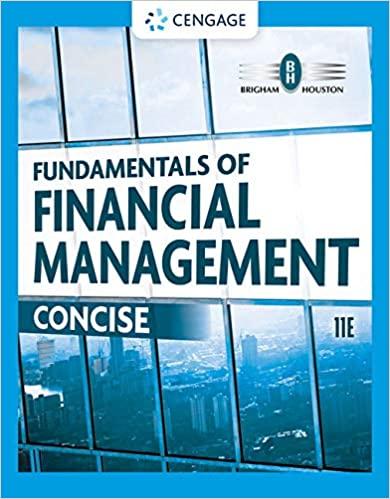Question
Lisa has $100,000 to invest in 10 mutual fund alternatives. She has some self-imposed restrictions for her investment strategy. First, she must invest all of
Lisa has $100,000 to invest in 10 mutual fund alternatives. She has some self-imposed restrictions for her investment strategy. First, she must invest all of the $100,000. For diversification, no more than $25,000 can be invested in any fund. However, if a fund is chosen for investment, then at least $10,000 must be invested in it. No more than two funds can be pure growth funds. At least one pure bond fund must be selected. The total amount invested in pure bond funds must be at least as much as the amount invested in pure growth funds.
Formulate and solve a model that will maximize Lisa's expected annual return.
How much do you invest in Fund 1 (round to the nearest whole dollar)?
How much do you invest in Fund 2 (round to the nearest whole dollar)?
How much do you invest in Fund 3 (round to the nearest whole dollar)?
How much do you invest in Fund 4 (round to the nearest whole dollar)?
How much do you invest in Fund 5 (round to the nearest whole dollar)?
How much do you invest in Fund 6 (round to the nearest whole dollar)?
How much do you invest in Fund 7 (round to the nearest whole dollar)?
How much do you invest in Fund 8 (round to the nearest whole dollar)?
How much do you invest in Fund 9 (round to the nearest whole dollar)?
How much do you invest in Fund 10 (round to the nearest whole dollar)?
Given the amount that Lisa is investing, how much money can she expect for an annual return (round to the nearest cent)?
Now suppose that Lisa wants to invest in at least 6 different mutual funds. What is the annual return with this added restriction (round to the nearest cent)?
Carefully explain if and why or why not Lisa should keep this added restriction of investing in at least 6 mutual funds.
Lisa is again unconcerned with the number of funds she invests in. However, she wants to make sure she only invests in at most one of Funds 5, 6, or 7 (Growth & Income). Add this constraint to your original model (parts (a) - (k)). What is her expected return now (round to the nearest cent)?

Step by Step Solution
There are 3 Steps involved in it
Step: 1

Get Instant Access to Expert-Tailored Solutions
See step-by-step solutions with expert insights and AI powered tools for academic success
Step: 2

Step: 3

Ace Your Homework with AI
Get the answers you need in no time with our AI-driven, step-by-step assistance
Get Started


